Places People Lived
Places People Lived
Case Study: Using Land Records
Mapping helps you learn more about where people lived and how this affected your family tree. The people who lived near your family also are important people to study for clues to new research and to learn more about your family.
Here is a case study explaining how a land record might be used to learn more about your family. My goal is to examine a small area and see how it changed over time and learn more about the family relationships in the area. Let's start by looking at a typical patent.
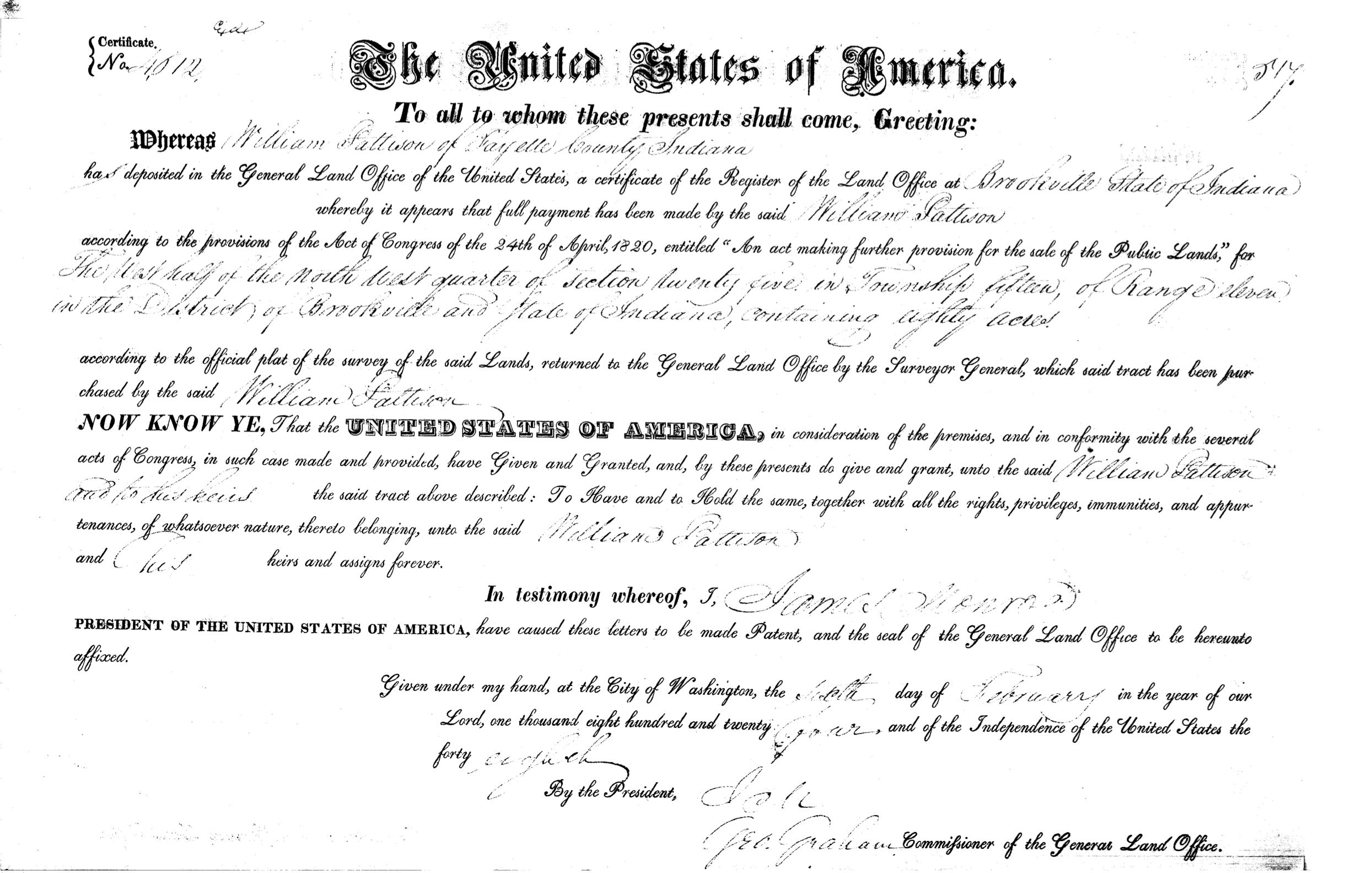
In 1824 William Pattison entered half of the northwest corner of Section 25 in Fayette County, Indiana. William Alger entered the other half of the northwest corner. It is possible that these men were not related at all, but often times groups of families entered nearby properties together.
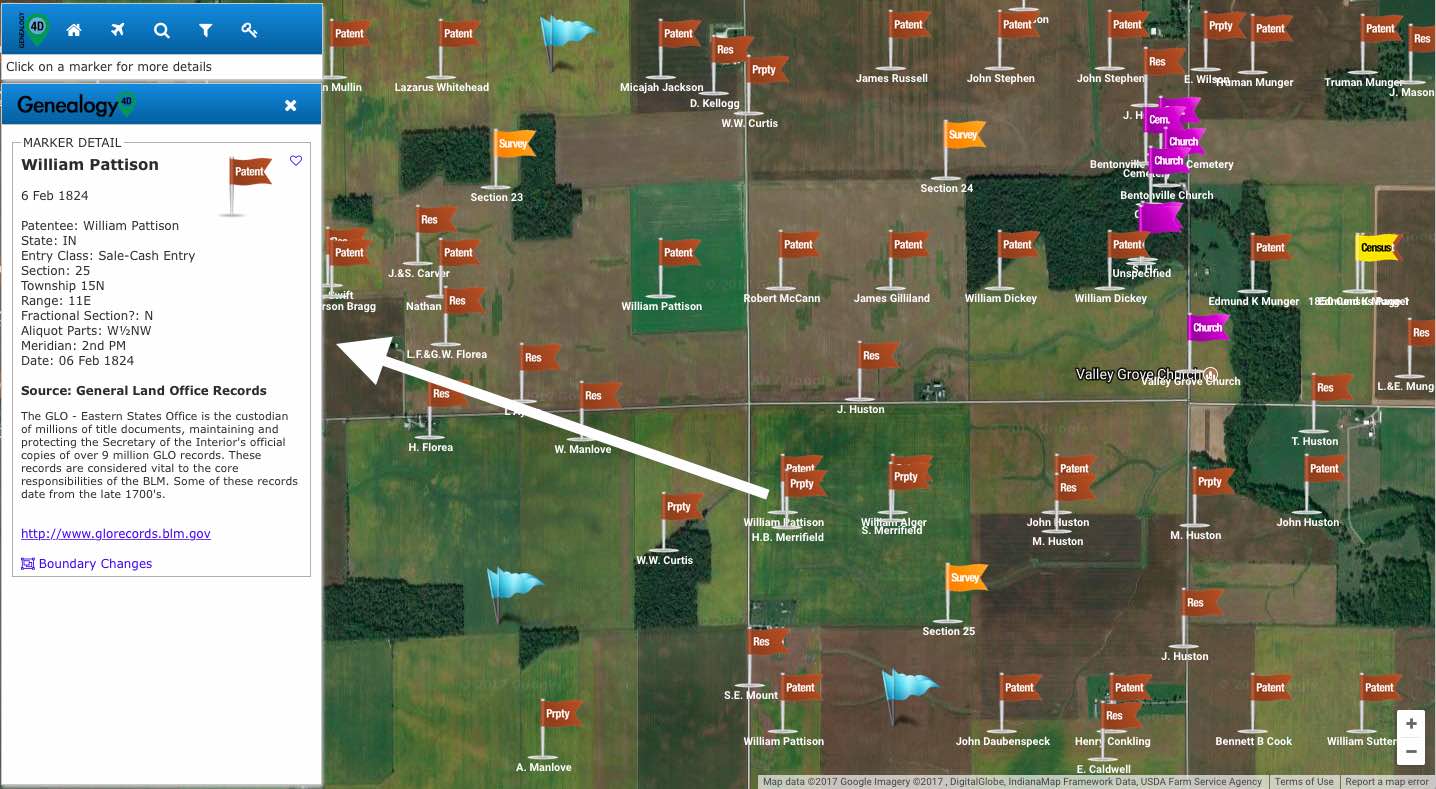
By 1875--over fifty years later--there are new people living in this same land with surname of Merrifield. H. B. Merrifield owns one half and S. Merrifield owns the other. Since they share the same surname this usually means they are related in some way. But are either of them related to William Pattison or William Alger? It is possible, so more research is needed.
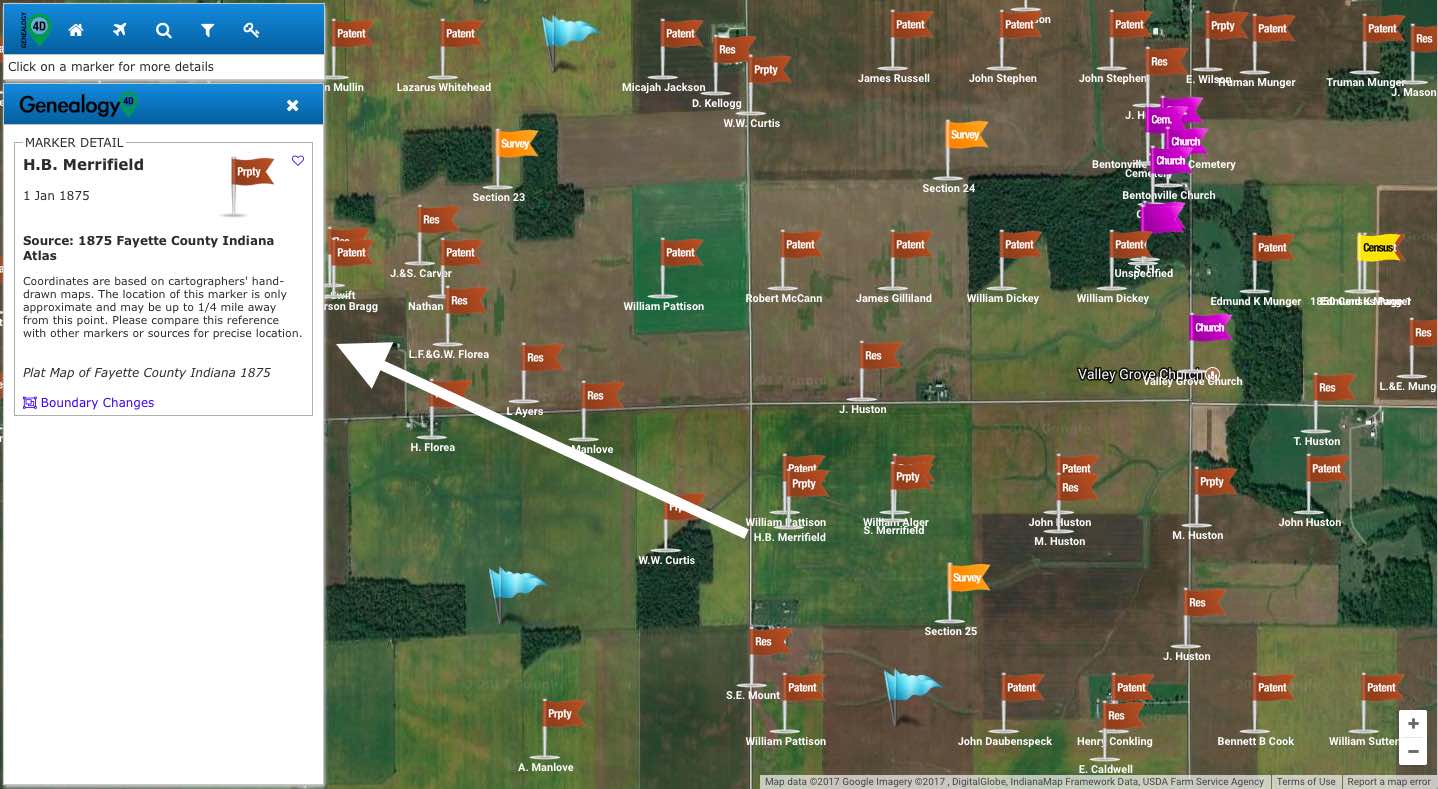
Compare this to their neighbors. Here you can see that John Huston receives a patent for this property in 1823.
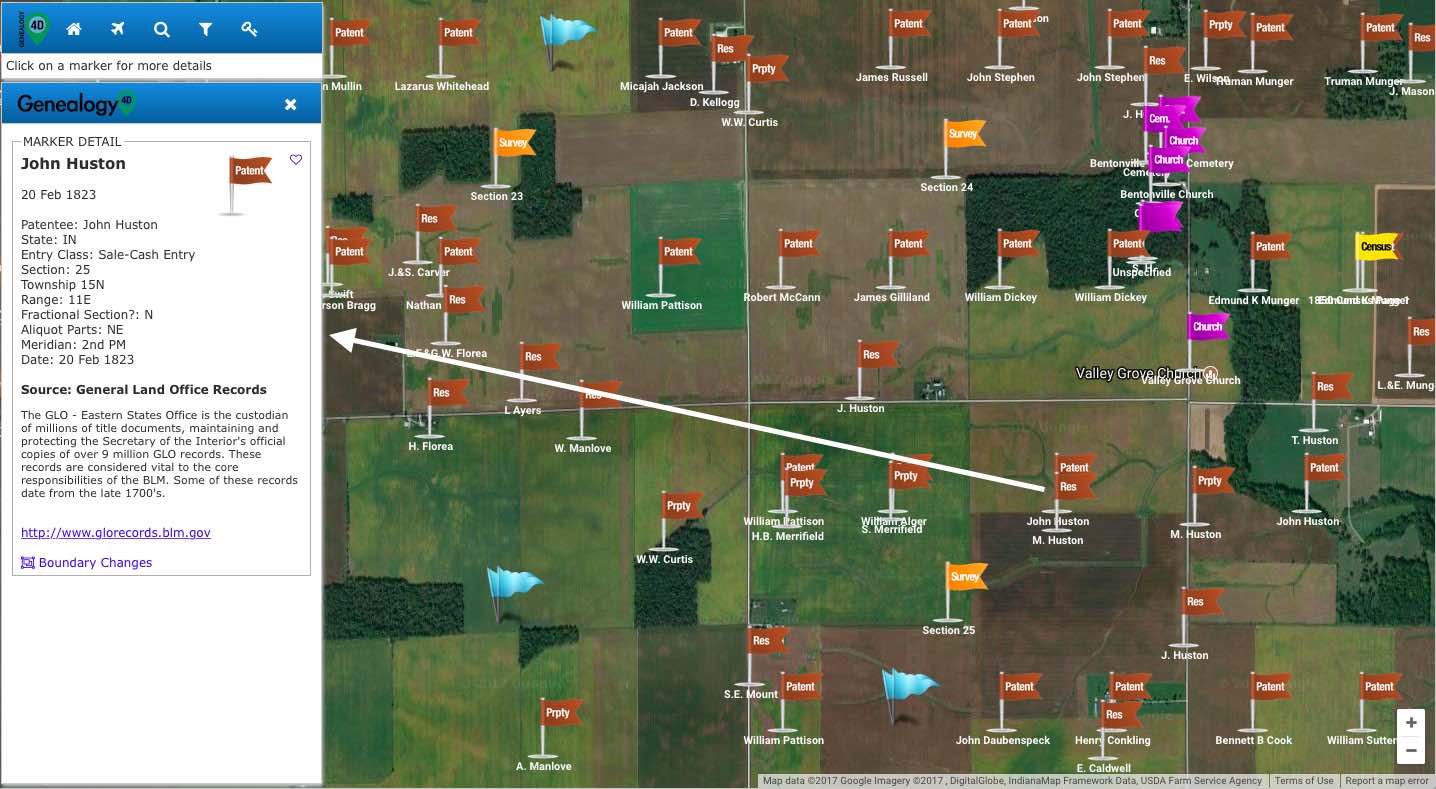
However in this case, over 50 years later there are still members of the Huston family living on the same property. This is a clear sign that the property was divided in some type of probate action. Usually you will find a matching probate record to explain in detail how the property was divided. However, this is not always the case. Sometimes if the land was sold prior to probate or there was record loss in that county due to fire or damage, the probate record cannot be found. By bringing multiple records together from a wide range of years onto the same map, Genealogy4D makes it much easier to see how neighbors and families related to each other.
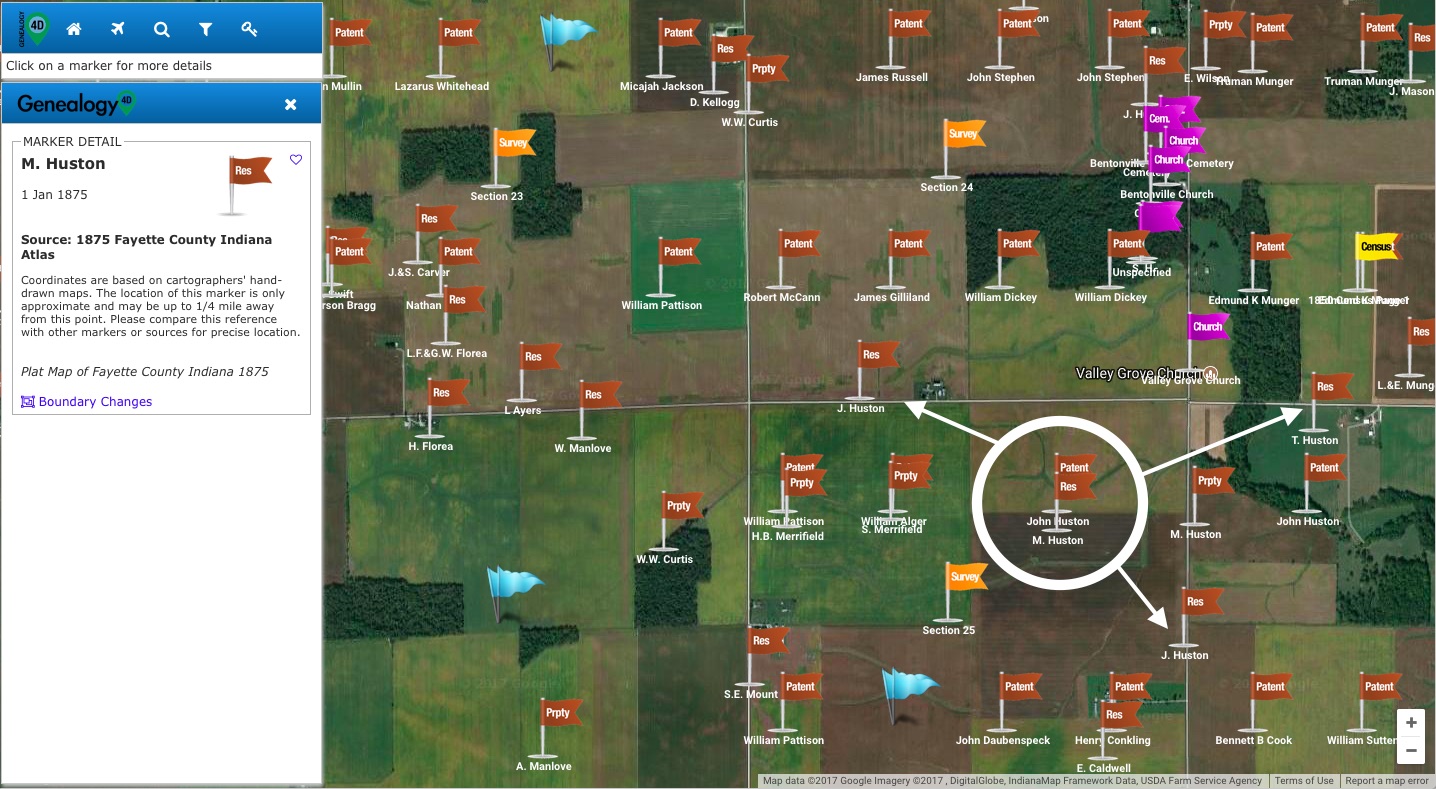
Genealogy4D can allow you to see a small area and limit the markers to a narrow time range. By using this feature you can discover relationships and patterns over time. Here is a snapshot of the available markers in this area from 1820-1840.
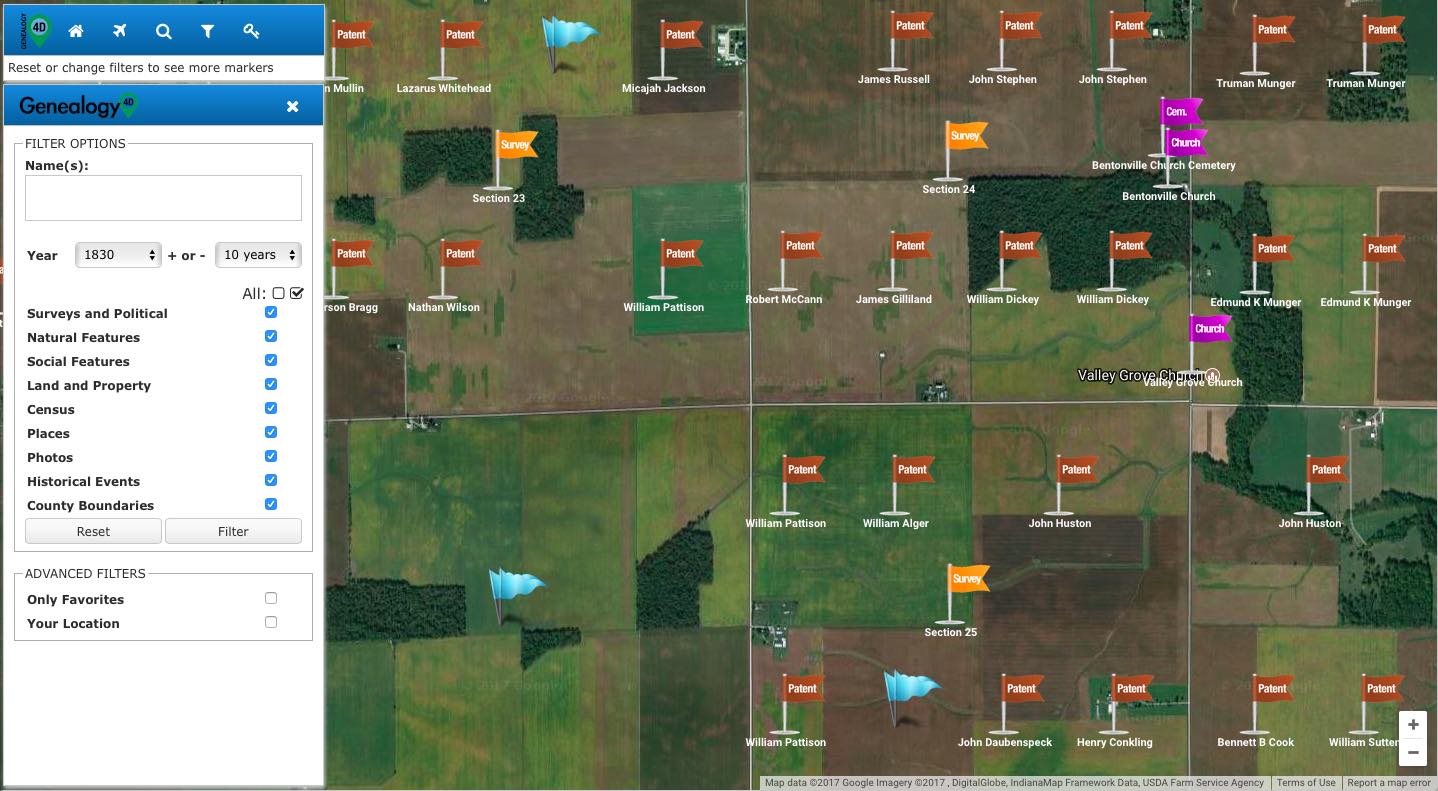
Now here is the same area in the range of 1855-1875.
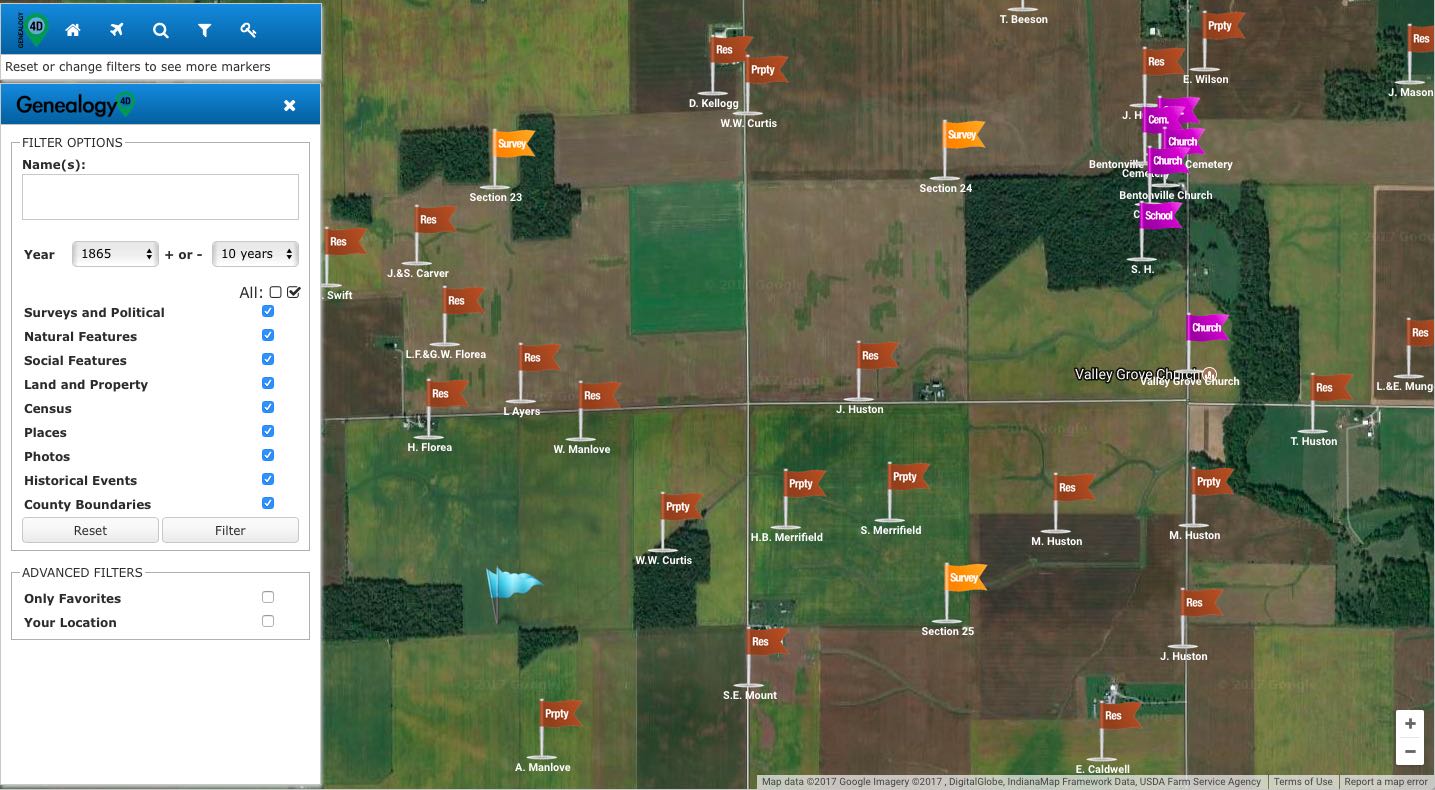
What can you discover about your family? Using some of your ancestors, take a look at Genealogy4D and see what new discoveries you can make.